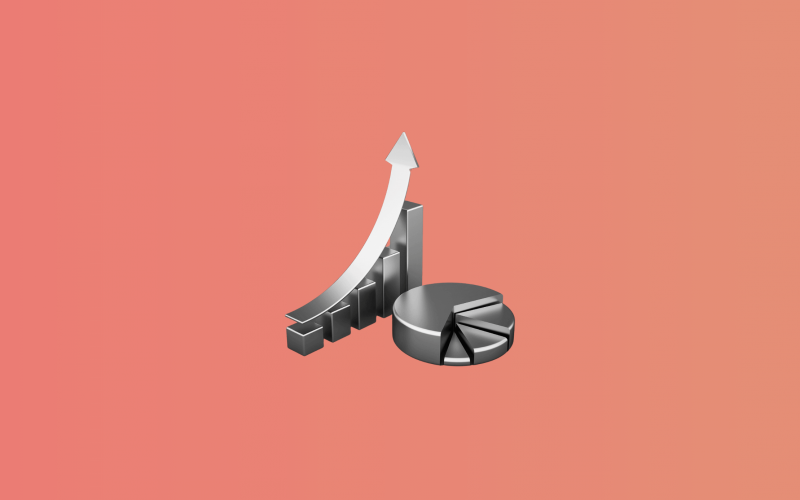In the complex world of finance, if there’s one thing that’ll help you stand out, it’s understanding key metrics. It’s essential not only for your business’s health but also for formulating business strategies.
One such metric is the EBITDA to interest coverage ratio—a must-know for investors, analysts, and corporate managers.
Keep reading to understand all you need about this vital ratio and its importance in a company’s finances.
Contents:
What is the EBITDA to interest coverage ratio?
Recent studies reveal that 17 percent of small and midsize businesses carry outstanding debt between $100,000 and $250,000. For them, EBITDA interest coverage ratio, or EBITDA coverage, is a key metric, determining how often they can cover their interest expenses with their earnings.
EBITDA stands for earnings before interest, taxes, depreciation, and amortization. Simply put, it measures a company’s ability to pay interest on its outstanding debt using solely its earnings without deducting taxes and other liabilities.
The formula for calculating EBITDA to Interest Coverage Ratio is:
EBITDA to Interest Coverage Ratio = EBITDA / Interest Expense
Here, EBITDA represents a company’s operational performance, and Interest Expensed denotes the total interest payable on outstanding debt.
Why is the EBITDA coverage ratio important?
EBITDA Coverage Ratio plays a crucial role when it comes to liquidity and solvency. It tells a lot about its financial performance. Here are some key points:
Risk assessment
Higher ratios indicate that the company is doing well financially. In essence, that particular company can comfortably pay its interest commitments on time. This reduces liquidity risk and makes for a stable investment.
Investment decisions
EBITDA Coverage plays an essential role for investors. On the basis of this, investors can conclude whether a certain company is worth investing in. A higher value means a strong investment opportunity and vice versa.
Operational efficiency
Over time, the EBITDA to Interest Coverage Ratio can give insights into operational efficiency and profitability improvements. An increasing value tells that the company is moving towards financial stability, while a decreasing value says a lot about weak financial situations.
And now let’s take a closer look at what ranges for this ratio we should be looking for and how to interpret them.
Target ranges for the EBITDA to interest coverage ratio
Knowing the target ranges for the EBITDA to interest coverage ratio helps you gauge a company’s financial health. These ranges offer a benchmark for assessing stability, guiding both internal management and investor confidence. Here are the target ranges and their significance for financial performance.
- 1.5 or higher: Generally indicates strong financial health, suggesting that the company can meet its interest payments without any hassles.
- 1.0 to 1.5: This range signals caution. While the company generates enough EBITDA to cover its interest, it’s at risk of financial distress.
- Below 1.0: This is a troubling sign. This indicates that the company may not generate enough income to cover its interest, and raises concerns about solvency.
What are the benefits of measuring EBITDA?
The EBITDA coverage ratio is an important metric that, if duly understood and leveraged, will show just how a business can remain resilient, negotiate terms favorable in any market condition, and confidently pursue growth. Here’s what you’ll get by understanding your EBITDA coverage:
- Improved accuracy and strategic decision-making: This ratio provides a good picture of the available cash for interest payments and helps the company make better and more informed decisions to shore up financial stability.
- Better debt management: A high coverage ratio indicates that a business is able to meet interest payments with comfort, and this generally translates into better loan terms and also puts businesses in a bargaining position.
- Real-time financial insights: The ratio basically helps the firm to identify any cash flow problem well in advance and take remedial measures so that a cash crunch situation can be averted.
- Better investor confidence: A good ratio reduces perceived default risk, hence better investor confidence and more capital attract towards the firm.
- Operational efficiency: A good EBITDA shows good operating performance, which enables the management to focus on growth initiatives rather than managing cash flow crisis situations.
- Guided debt strategy and financing decisions: The ratio informs the approach to debt management strategies, enabling business enterprises to make necessary adjustments in order to view an increase in cash flow and decrease debt where appropriate.
- Performance measurement: With the EBITDA Coverage Ratio, management will be better positioned to evaluate period-to-period effectiveness of its operational and financial strategies, establish appropriate benchmarks, and adjust those strategies as necessary for long-term growth.
Want to get accurate financial insights? Automate! Use Synder to turn your raw ecommerce numbers into actionable data! Generate detailed performance reports in clicks and know your business financial health. Join Synder’s Weekly Public Demo to talk to our expert about how we can solve your particular needs.
Final thoughts
EBITDA interest coverage is more than a ratio; it’s a tool that helps in estimating their financial health, making informed decisions, and increasing investor confidence. With the EBITDA to interest coverage ratio, businesses can learn about their ability to pay due debts, understand operational efficiency, and attract investments.
It’s a metric that gives businesses a real edge: resilience in changing markets, better terms for lending, and a solid base for long-term success. In today’s financial world, it’s one of the key measures for short-term agility and long-term strength.
FAQ
- How does the EBITDA to Interest Coverage Ratio impact lending terms for a business?
Lenders usually view a high EBITDA to interest coverage ratio as indicative of stability in the business and, therefore, offer better loan terms or decrease the interest rate with a rise in borrowing capacity. A business with a good ratio is considered less risky, and hence, may obtain better lending terms.
- What’s the difference between the EBITDA coverage ratio and the debt-to-equity ratio?
While the EBITDA coverage ratio reflects the ability of the company to pay interest using operational earnings, the debt-to-equity ratio represents the extent of a company’s total debt in relation to the shareholders’ equity . Both ratios are considered important but serve different purposes: the former is used for gauging liquidity, and the latter indicates overall leverage and financial structure.
- Why is interest coverage ratio important?
A high EBITDA Coverage Ratio shows that the company has sufficient earnings to meet its debt obligations, freeing up resources for expansion or investment. Besides, this ratio indicates stability that might also attract investors or partners who believe in growth initiatives.
- Can changes in the EBITDA coverage ratio signal potential cash flow issues?
Yes, a reducing EBITDA coverage ratio could imply potential cash flow problems or increase in debt burdens. This trend could thus be a warning for management to revisit financial strategies, improve operational efficiencies and reduce debt to avoid financial strain.
- How does the EBITDA to Interest Coverage Ratio relate to a company’s credit rating?
Credit rating agencies also consider the EBITDA Coverage Ratio as an important element in determining a company’s financial health. A high ratio generally contributes positively to a credit rating, signaling that the firm enjoys higher earnings relative to its debt obligations. This can, in turn, lower borrowing costs and improve access to capital.

.png)




